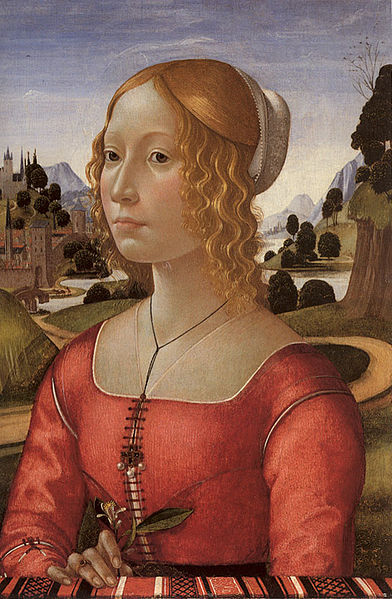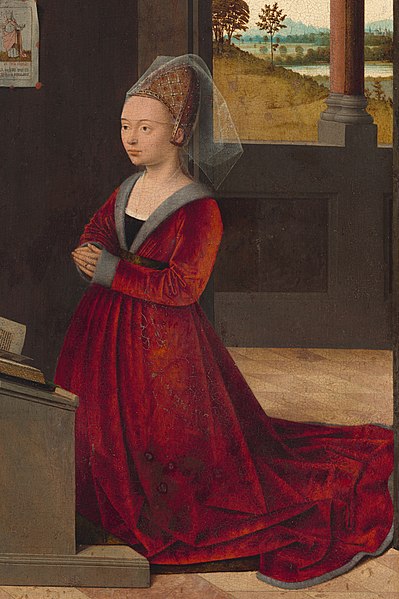A partlet was a 16th-century fashion accessory. The partlet was a sleeveless garment worn over the neck and shoulders, either worn over a dress or worn to fill in a low neckline.
Market woman wearing a black partlet with a white lining over a reddish kirtle, Netherlandish, 1567.
Italian partlet, c. 1490
Tudor partlet, c. 1540–43
Lattice-work partlet worn by Eleanor of Toledo
1400–1500 in European fashion
Fashion in 15th-century Europe was characterized by a series of extremes and extravagances, from the voluminous robes called houppelandes with their sweeping floor-length sleeves to the revealing doublets and hose of Renaissance Italy. Hats, hoods, and other headdresses assumed increasing importance, and were draped, jeweled, and feathered.
Full-bodied houppelandes with voluminous sleeves worn with elaborate headdresses are characteristic of the earlier 15th century. Detail from Très Riches Heures du Duc de Berry.
Young Italian men wear brimless caps, The Betrothal, c. 1470
Bold pomegranate- or artichoke-patterned silks are characteristic of the 15th century, as are richly coloured velvets and woolens. Fine linen was important for headdresses and for the shirts and chemises revealed by new lower necklines and slashing.
A fur-trimmed Burgundian gown of the mid-15th century has a V-neck that displays the black kirtle and a band of the chemise. Hair is pulled back in an embroidered hennin and covered by a short veil.








